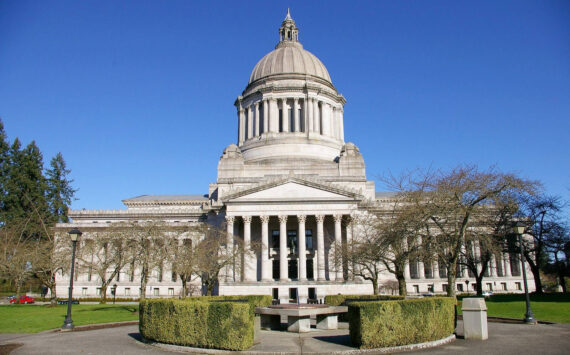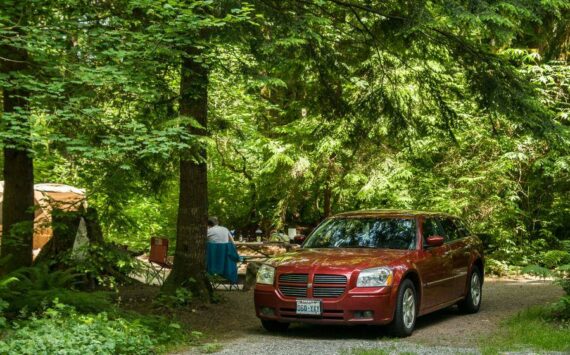By Morf Morford
Tacoma Daily Index
Every development is a trade-off.
Any given property has a multitude of possible uses.
A realtor friend of mine told me many years ago that his search was for “the highest and best use” of any given property.
“Highest and best use”, of course, is subject to interpretation.
That “interpretation” is often, if not predominantly, defined by profit – the more immediate, the better.
A key principle is the familiar adage – “money talks”.
Money does indeed talk, but so do other things. From posterity to legacy to cycles of nature to neighborhood character to national identity all factor in, or at least they should.
Countering, and perhaps intersecting, these trends, is the tendency of politicians, local and national (perhaps even global) to obsess about minutia and rubber-stamp without much discussion or community participation, large projects with long-term impacts.
We are seeing the convergence of these two inviolate forces of any and every established society right now in Tacoma.
There is a barely noticeable plot of land between South Tacoma Way and South Tyler and approximately South 56th and Center.
It is surrounded by large buildings, busy streets and industrial uses.
And in spite of being almost disguised by the developments around it and being barely visible, it is huge – over 250 acres.
To put it mildly, it is a prime location. It is on a railroad track, near a light rail station and, of course, close to major roadways, including Highway 16 and I-5, and barely five miles from the Port of Tacoma.
It is also one of the largest green spaces in the city, and Tacoma’s largest aquifer.
To say that these are competing considerations would be the ultimate understatement.
For whatever set of unintended circumstances, this property has been unoccupied for decades.
If nothing else, this nondescript, under-utilized property has become a center of controversy – and the intended center of a massive development.
A 2.5 million square foot warehouse complex and distribution center is being planned that would cover approximately the size of 50 football fields – not counting the additional non-porous surrounding paved parking areas and distribution drives.
A development of this scale, according to a recent City of Tacoma’s notice is not considered as seriously impactful to the environment.
The city will be using the Determination of NonSignificance (DNS) process to issue its State Environmental Policy Act (SEPA) Determination and will issue a Mitigated Determination of NonSignificance for the warehouse proposal to affirm that the project will not have a probable significant adverse impact on the environment.
The DNS process (under WAC 197-11-355) also allows for a single integrated comment period on the notice of application with a second comment period not typically required when the DNS is issued.
Among other “non-probable significant adverse impacts” the completed project is estimated to generate approximately 4,980 new weekday daily trips with truck traffic estimated to be about 28 percent of overall site-generated traffic.
This means that as part of the nearly 5,000 additional weekday commuting vehicle trips, nearly 1,400 more delivery trucks will be going in and out of the complex, possibly 24 hours a day and seven days a week.
Here are just a few details from the company making the proposal: https://bridgepointtacoma2mm.com/.
The initial proposal is for three (possibly four) buildings with a combined square footage of about 2.5 million, with 1,262 parking places, not counting about 1,080 parking spaces for trailers.
The site is currently zoned M-2 – suitable for light industrial or warehousing.
Under the current proposal, about 75% of the site would be impervious (buildings, parking and entries).
There is a stream and biodiversity corridor which will be protected and restored.
To put it simply, this project will completely reshape the neighborhood.
Whether this is “the highest and best use”, or what the neighborhood wants or even the best use of the property is the topic that is, or at least should be, under discussion.
Yes, as always, “money talks”, but an equal voice should be the history and identity of the neighborhood.
And this area is among the poorest and least white neighborhoods, with only 48% whites compared to the average of 72.4% in Pierce County.
My bias is that “highest and best use” should be measured by the longest time frame possible.
Much of that area holds buildings near or even past the century mark.
Does a warehouse complex contribute to the integrity and appeal of the neighborhood?
Or does it even approach the city planning department’s own goals as expressed on their website?
These include over-arching intentions like these;
This program provides enhanced planning and development support to help communities create strong, vibrant, and diverse neighborhoods. Led by residents from the neighborhood and informed by community engagement processes, the Neighborhood Planning Program will consider immediate ways to make your surroundings more livable. The goal of a neighborhood planning process is not just creating and implementing a plan, the process itself is also a tool to help improve communities through building community capacity, constituent energy, relationships/partnerships, and co-creation opportunities for residents to shape their own neighborhoods.
Any development is the platform for competing visions, intentions and possibilities.
Some of these visions, intentions and possibilities are immediate and some are long term, some coincide with long held values of the neighborhood, others in contrast to it.
My bias is that those most directly affected – those who live and work in that neighborhood should have the strongest voice in these conversations.
This particular project is a private proposal on private property and is not a city initiative.
As with most, if not all projects, public comment is welcome, in this case by March 10 at 5 p.m.
Send to: Shirley Schultz, Principal Planner, 747 Market St., Room 345, Tacoma WA, 98402; call (253) 345-0879; or email shirley.schultz@cityoftacoma.org.
A public meeting will be scheduled not before March 31, with public comment accepted at least 7 days after that.





